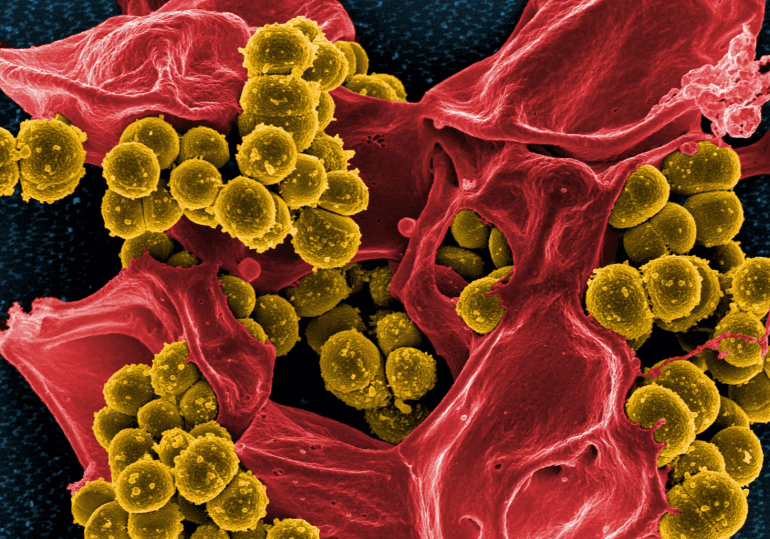- Researchers utilized AI to predict new antibiotics in the global microbiome, a significant advancement in combating antibiotic resistance.
- The study, published in Cell, uncovered nearly 1 million new molecules hidden in microbial diversity.
- AI expedites the discovery process, offering hope in the face of escalating antimicrobial resistance.
- Stringent safeguards are in place to prevent misuse of AI for harmful purposes.
- Accessible data and code aim to foster collaboration and drive scientific progress.
- Further investigations into top candidate molecules are underway to unlock novel antibiotic therapies.
Main AI News:
In a groundbreaking endeavor, researchers utilized machine learning to forecast potential new antibiotics within the global microbiome, marking a pivotal leap forward in combating antibiotic resistance through artificial intelligence (AI).
The recent report, unveiled in the esteemed journal Cell, outlines the breakthroughs achieved by scientists leveraging an algorithm to delve into the vast expanse of microbial diversity. César de la Fuente, a key figure in the study and a professor at the University of Pennsylvania, emphasized the significance of this approach. By tapping into the microbial “dark matter,” nearly 1 million new molecules were unearthed, a feat previously unimaginable without AI intervention.
Traditionally, such discoveries would entail laborious manual processes like water and soil sample collection. However, with the aid of AI algorithms, this arduous task has been streamlined, expediting the identification of potential antibiotic candidates exponentially.
The urgency of this research stems from the escalating threat of antimicrobial resistance, which claimed over 1.2 million lives in 2019 alone. If left unchecked, projections indicate a harrowing rise to 10 million annual deaths by 2050, as highlighted by the World Health Organization (WHO).
Despite the transformative potential of AI in antibiotic research, de la Fuente also acknowledges the inherent risks. There’s a looming concern that malevolent actors could exploit AI to design harmful toxins. However, stringent safeguards have been implemented to mitigate such threats, ensuring responsible use of AI in scientific endeavors.
This study, deemed the “largest antibiotic discovery effort ever,” underscores AI’s pivotal role in revolutionizing antibiotic research. Over the past decade, AI has significantly expedited the discovery process, generating hundreds of thousands of potential candidates in a fraction of the time previously required.
The journey from AI prediction to actual antibiotic approval is multifaceted, typically spanning a decade or more of rigorous laboratory research and clinical trials. Yet, the promise of AI lies in its ability to accelerate these phases, offering hope for swifter advancements in antibiotic development.
Central to this study was the analysis of genomes and meta-genomes from publicly available databases, identifying DNA fragments with potential antimicrobial properties. Subsequent validation involved synthesizing and testing a subset of these molecules in laboratory settings, revealing a promising 79% efficacy rate against various pathogens.
Antibiotic resistance looms large due to widespread misuse and overuse of antimicrobials, necessitating innovative approaches to drug discovery. By making their data and code accessible to all, the researchers aim to foster collaboration and drive scientific progress for the betterment of humanity.
Looking ahead, further investigations into top candidate molecules hold the key to unlocking novel antibiotic therapies. While the road to clinical trials is long, the strides made through AI-driven research offer a beacon of hope in the fight against antibiotic-resistant infections.
This study joins a growing chorus of AI-driven breakthroughs in the realm of biology. From Google DeepMind’s AlphaFold program, predicting protein interactions, to potential breakthroughs in cancer therapy and crop resilience, AI continues to reshape the scientific landscape.
However, it’s essential to tread cautiously, as noted by Lisa Messeri, an anthropologist at Yale University. While AI holds immense potential, its application must be judicious, ensuring it complements rather than supplants human expertise.
Conclusion:
The integration of AI in antibiotic discovery represents a paradigm shift in the pharmaceutical market. With the potential to streamline drug development processes and address the pressing issue of antibiotic resistance, companies investing in AI-driven research stand to gain a competitive edge. Moreover, the open sharing of data and code sets a precedent for collaborative innovation, fostering a culture of knowledge exchange within the industry. As AI continues to revolutionize healthcare, companies must adapt their strategies to harness the full potential of this transformative technology.

